Help my lawn is nothing but weeds! Keep reading for our tips on how you can save your lawn.
We all want a lawn that is the envy of the entire neighborhood. Unfortunately, however, it is not that easy to achieve.
First, you must ensure that it is in tip-top shape and that there are no weeds, such as clover and dandelions, poking through the canopy of your turf grass.
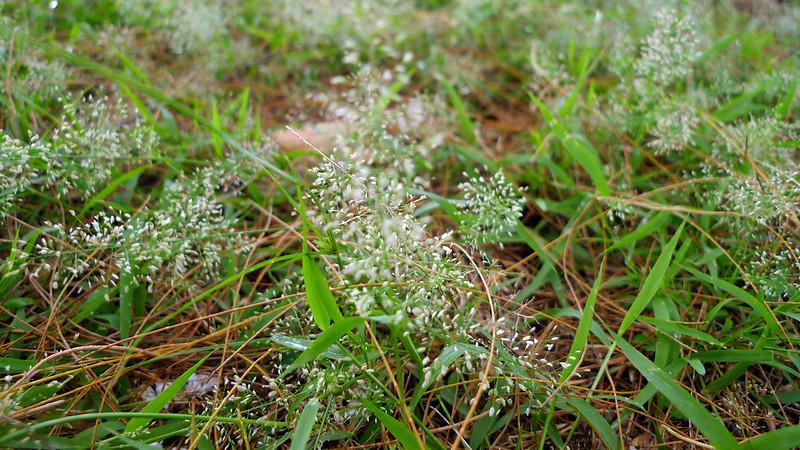
If your lawn is all weeds, you’ll need to take active steps to get your yard back on track.
Weeds ruin the look of an otherwise superbly maintained lawn like nothing else.
Now, if there are only a few weeds in your yard, you could dig them up. But what if weeds overrun your lawn, and it is nothing but just a few patches of grass?
Revamping a lawn full of weeds will take time, effort, and patience, but it is achievable. You might even need to start a lawn from scratch in extreme infestations. Moreover, you must ensure that you fix the problem causing weed growth on your lawn in the first place.
Without killing the root cause of a severe weed infestation, the weeds will come just right back, no matter how hard you try.
So, let’s start by looking at a few factors that cause severe weed growth in your lawn, what you can do about them, and how to fix a yard full of weeds.
RELATED: Garden Weeds With Pink Flowers (And How To Get Rid Of Them?)
What Causes Weed Growth In a Yard?
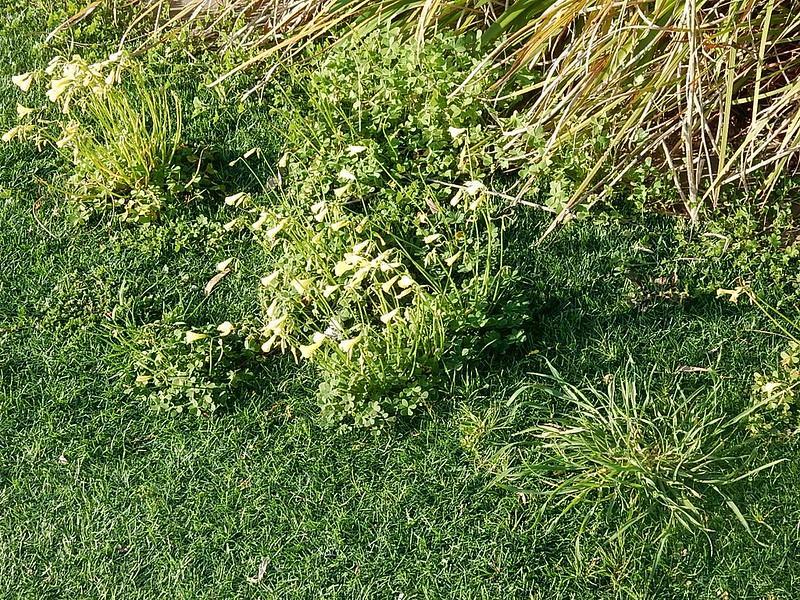
Weeds are considered opportunistic and grow when conditions are favorable.
We all want to keep our prized patch of turf looking at its best. So, knowing how to ward off pesky lawn intruders such as weeds is worthwhile. Different types of weeds come from different sources. However, they all share one thing: they are opportunistic.
It means that they will only invade a lawn when given the opportunity. The opportunity here means favorable conditions for weed growth.
You must know what these conditions are to prevent the weeds from returning once you have revamped your lawn.
Using The Wrong Weed Killer
Not all weeds are the same; one general-purpose lawn weed killer cannot kill them all. For instance, weed killers can be broadly categorized into systemic and contact herbicides.
Systemic herbicides work by getting absorbed into the weed via its roots, and then they travel throughout the entire plant system, ultimately killing the weed from the inside out. System herbicides kill the whole weed, leaving nothing behind.
In contrast, contact herbicides get absorbed through the plant parts they touch and have a localized effect on the weeds. As a result, roots and shoots of the weeds often survive when using contact herbicides, and they make a comeback.
Therefore, if you want to ensure that each part of your weed dies and they never return, I highly recommend that you go with a systemic herbicide.
Using A Weed Killer At The Wrong Time
Sometimes, the issue is not that you are using the wrong herbicide; it is the timing of the herbicide application. The chemicals of the weed killer need to be absorbed by the weed to work. So, if your weed is dormant, it won’t absorb the herbicide.
So, no matter how much herbicide you apply, the weed won’t die in weed dormancy.
Likewise, it would help if you did not use herbicide in cold or shortly before heavy rain. Again, it is because rain or snow will wash off the chemicals right off the grass, rendering the herbicide treatment ineffective, and you will need to apply it again.
Using Grass Clippings To Smother Weeds
You might have read somewhere online or been told by a friend that you can smother weeds by leaving grass clippings on the lawn whenever you mow. Unfortunately, this trick does not work. Instead, it creates a carpet of dead grass in the yard, forming thatch.
And, if this layer of thatch becomes too thick, it can stop nutrients, air, and water from reaching the grassroots, ultimately weakening your grass and giving weeds a chance to move in. Also, when this thatch decomposes, it releases nitrogen in the soil.
Now, instead of helping the grass, this nitrogen feeds the weeds, which then take over.
Mowing The Grass Too Low
If you mow your grass too low, the grass never develops deep roots, and grass with shallow roots cannot compete with weeds that often have extensive root networks. Moreover, when the grass is short, it exposes the ground to sunlight and air.
Sunlight is exactly when dormant weed seeds and spores need to germinate. And once they grow, they easily outcompete the shallow-rooted grass with their extensive root networks for water, nutrients, and other resources and ultimately take over.
Even if you do not mow low, but your grass is thin, weeds will still. Weeds have no problem flourishing in a yard where the grass is sparse or dying. So, if you have a thin lawn, you might want to reseed it to save it from weeds.
Your Lawn Soil Is Too Compact
Another reason you might have a lawn full of weeds and not grass is soil compaction. When the soil is compacted, soil particles are too closely packed together. When this happens, air, water, and nutrients cannot penetrate the ground and reach the grassroots.
As a result, the grass becomes weak, which, once again, gives weeds a chance to move in. Now, weeds do not have any problem growing in compacted soil as they have deep and extensive root networks which they can use to pull up water and nutrients.
If you want to save your lawn from soil compaction and resulting weed attacks, I highly recommend that you aerate your lawn regularly.
Your Lawn Soil Is Unhealthy
If the soil of your lawn lacks any nutrients, it will not be able to support healthy grass growth, and as you might already know by now, weak grass in a yard creates the perfect opportunity for the weeds to move in and take hold of a space.
The best way to fix this issue is to fertilize your lawn with organic matter such as compost or synthetic fertilizer.
However, I highly recommend getting a soil test before fertilizing your lawn to avoid overfertilization. It can be as damaging to the grass as infertile soil.
In addition, a soil test will tell you which nutrient your lawn soil lacks and by how much.
Underwatering Your Turfgrass
Inadequate watering is another main reason why weeds take control of a lawn. When your grass is not receiving enough water, it will become weak, turn brown and ultimately die. As a result, there is no opportunity for the weeds to sprout and take over.
Weeds have much more robust root systems than grass, and they can easily withdraw water from deep into the ground where grassroots cannot reach.
Experts suggest that you should water your lawn deeply and infrequently. Watering like this helps grass develop a deep root network, allowing it to survive drought better. Also, deep roots will help grass compete better with pesky lawn weeds.
How To Restore A Lawn Full Of Weeds?
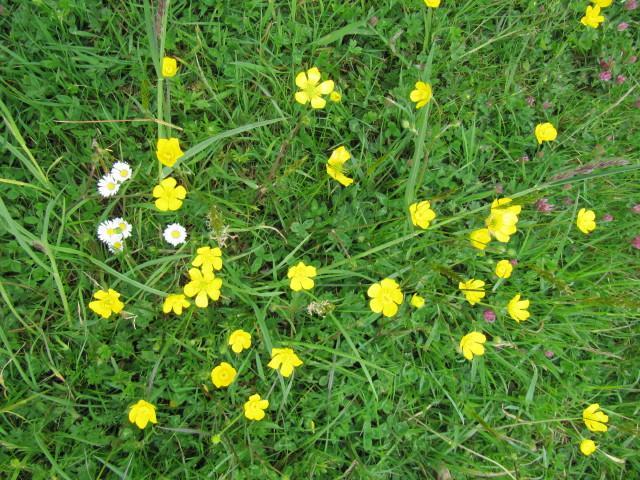
Taming a lawn full of weeds might feel daunting, but with proper knowledge, you can do it!
Now that you have learned the factors and conditions that cause extensive weed growth on lawns, let’s discuss the solutions. To start, you will need to determine the extent of the problem and what kind of weeds are infesting your yard. So, let’s start from there.
1. Determine The Extent Of The Issue
The severity of the weed infestation will determine the best course of action to fix your weedy lawn. For example, if there are only a few large patches of weeds in your yard, you can just dig them up.
Doing this will fix most of your problems in no time.
However, things will be different if you see weeds popping here and there all over your lawn. So, once again, I highly recommend that you carefully assess the situation of weed infestation in your yard and see how good or bad the lawn condition is.
Once you have accurately determined the extent of the problem, you will be much more likely to make the correct decision regarding weed removal and treatment.
In many instances when the lawn is nothing but weeds, experts recommend starting over and creating a new yard from scratch. And it makes sense!
With a lawn full of weeds, a complete removal is tricky. So, you don’t want to work your sweat off, removing something that will come just right. Do you?
Determine The Type Of Weeds Infesting Your Lawn
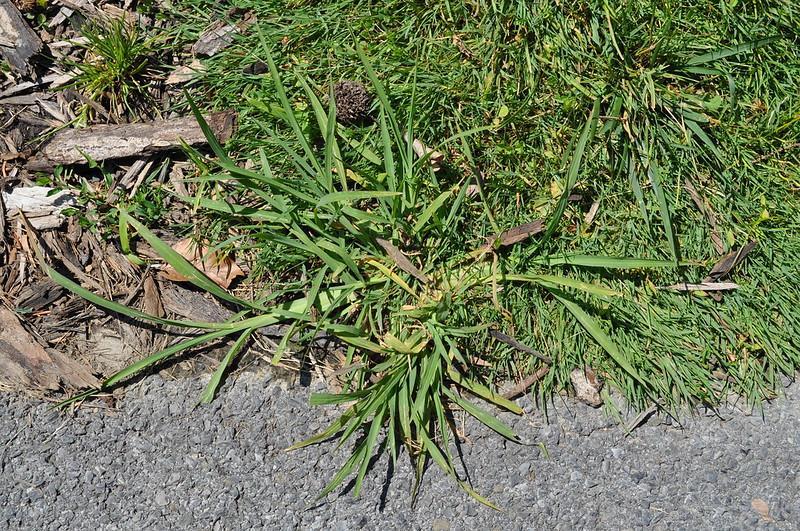
Crabgrass is an annual grassy lawn weed that spreads along the ground creating a dense mat.
The next thing you want to do when treating a lawn full of weeds is identify which type of weed is infesting your grass. Once you have this information, you will be better able to deal with the situation at hand and select the proper herbicide treatment.
There are tons of types of weeds out there that invade home lawns. However, they can be broadly classified into three groups mentioned below. And as long as you pay attention, you can quickly identify the weed in your yard and move on to the fix.
Grassy Weeds
Grassy weeds are grass-like weeds that are monocots, just like true grasses. It means when the seeds of these germinate, they give rise to one single leaf. To an untrained eye, distinguishing between grassy weeds and grass can be tricky.
Most of the time, people only realize that they have a grassy weed infestation when the weeds start smothering and killing their grass. Nevertheless, the most common grassy weeds that infest home lawns include foxtail, quackgrass, and crabgrass.
Grass-Like Weeds
As the name suggests, these weeds look like grass but are not true grasses. Unfortunately, many people do not notice these weeds until too late. Common grass-like weeds that usually infest home lawns include nutsedge, slender rush, foxtail, wild garlic, etc.
Despite their close resemblance with grass, grass-like weeds need to be removed unless you want your lawn to look like some busy heaven of land parks. Also, when these weeds die, they leave out bare spots that will give your yard an ugly patch look.
Broadleaf Weeds
Broadleaf weeds are the most straightforward to identify weeds that infest home lawns. This is because most broadleaf weeds have nodes with multiple leaves with net-like veins.
Also, they usually have showy flowers, which makes their detection even more straightforward.
Common broadleaf weeds typically infest home lawns include dandelion, clover, and ground ivy. Furthermore, these weeds are more prominent than grassy and grass-like weeds and can easily outcompete the grass for nutrients, water, and space.
So, if you see a broadleaf weed in your yard, get rid of it as soon as possible.
Annual, Biennial & Perennial Weeds
The differences between weeds do not just end on their physical appearance. Weeds can also be classified into annual, biennial, and perennial weeds, depending on their life cycle.
Annual weeds produce seeds in one season only throughout the year, whereas biennial weeds produce seeds twice a year. In contrast, perennial weeds can make seeds for many years and can survive and sprout year after year.
The information is essential because some herbicides are selective against annual, biennial, and perennial weeds. So, please make sure to choose the right one.
RELATED: Common Lawn Weeds With White Flowers (And How To Get Rid Of Them?)
2. Pick The Best Herbicide For Your Weeds
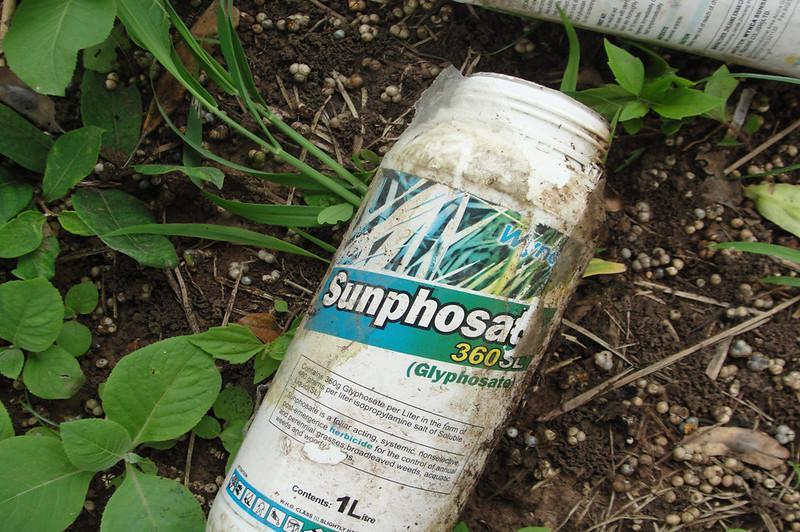
Choose herbicides with active ingredients that are effective against these specific problem weeds.
Once you have determined what type of weed is invading your lawn, it is time to go to war. And going to fight here means that you need to pick a herbicide.
If you have ever been to a gardening store or an online marketplace that sells garden and lawn supplies, you must know that many herbicide products exist. Therefore, choosing a suitable herbicide for your specific weeds can be pretty daunting.
However, this step is crucial as you will not win the war if you do not have the right weapons. So, I highly recommend you do some research about the weed infesting the lawn and see what herbicides work best against it. If still unsure, talk to an expert.
Types Of Herbicides
Herbicides are broad categories into two types which are pre-emergent and post-emergent. Pre-emergent herbicides are used when you want to prevent a weed from sprouting in your lawn in the first place.
However, they will be of no use to you even if they have the right ingredients or chemicals when your yard is already full of weeds.
In this situation, you need a post-emergent herbicide to kill the specific weeds on your lawn. Post-emergent herbicides work great against weeds that have matured or are still in the growth process. However, it would help if you used them at the right time.
When To Apply A Herbicide?
The herbicide will not produce good results if you pick a suitable herbicide and apply it at the wrong time. Therefore, you must ensure that you use the herbicide at the proper time.
For most weeds, this usually means treating them in their active growth stage. This is because, during this time, they absorb things at maximum speeds.
Follow The Instructions
When applying herbicide on your lawn, make sure that you follow all the instructions given on the label. And, for best results, do not over or underuse the product.
3. Wait It Out

In general, herbicides take about 2 to 4 weeks to work fully.
Once you have treated your lawn with a suitable herbicide, it is time to relax.
Don’t be impatient; you cannot expect to apply herbicide one day and wake up to a clean lawn free of weeds the next day.
Depending on the herbicide you use, it can take anywhere from two to four weeks to see any results. In some cases, it takes even longer!
Take, for example, the use of pre-emergent herbicides. People who have used pre-emergent herbicides must wait even longer to ensure the product gets all the weed seeds. Furthermore, the pre-emergent herbicide can also kill grass seed and young grass.
Therefore, avoid planting new seeds or sod in your yard during this time.
The wait might seem like a lifetime, but it is essential because planting anything during this time would waste money, resources, and, most importantly, your time.
So, what can you then do during this time?
A good idea would be to prepare the soil for planting seeds and sod and buy everything needed for the upcoming lawn tasks. So, let’s discuss what you need!
4. Rake & Till The Soil
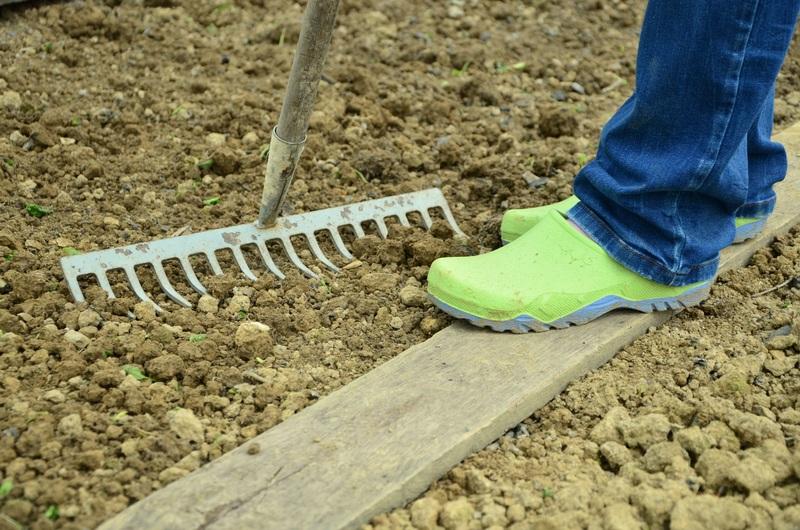
Once the weeds—and grass, if applicable—turn brown, it’s time to rake.
The next thing you need to do is prepare the soil for planting. For this, I recommend you start by raking and tilling your yard. It will loosen up the dirt and make it easier for the seeds and sod to take root in your yard.
During this time, the weeds will also start dying, and you will want to remove as many weeds as possible from your lawn to plant.
So, take out the rake or if there are too many weeds, rent a motorized tiller from your local gardening store and start. Then, remove as much vegetation as you can.
5. Dethatching & Aerating The Yard
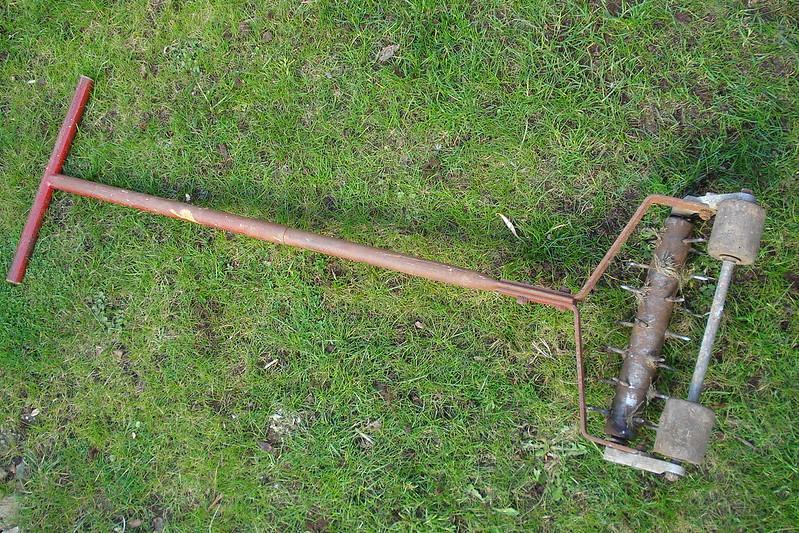
Dethatching and aeration are two of the best forms of nonchemical weed control.
Next, depending on the conditions, you may want to aerate and dethatch your lawn. Aeration involves creating tiny holes in the ground, which allow the nutrients, air, and water to travel deeper into the earth and makes grass roots grow more extensively in the soil.
In contrast, dethatching involves removing the layer of organic debris from the yard’s surface, producing similar results. Furthermore, these two processes are the best nonchemical way of controlling weed growth and spread in a yard.
It is because dethatching and aeration help grass grow strong and thick. And a healthy lawn itself is one of the best defenses and offenses against lawn weeds.
6. Amend The Soil.
Once the soil is tilled, raked, aerated, and dethatched, get a soil test.
A soil test will tell you if there are any nutrients your lawn soil lacks, its pH, and much more. You can use this information to amend the soil. And, with healthy comes healthy grass.
7. Plant Seeds Or Sod

If you want to create a lawn quickly, plant sod, but seeds are cheaper if you are tight on budget.
Once the soil is ready and all the amendments have been made, it is time to plant the grass. To do this, you have two options. You can either sow seeds or plant sod.
Both methods have their pros and cons, some of which are listed here:
| Planting Seeds | Laying, Sod |
| Requires less labor initially | Requires high labor when setting things up |
| Seeding comes with a lower initial cost | Sod has a high initial set-up cost |
| It creates a lawn gradually and slowly | It is quicker than making a lawn from seeds |
| You have to plant seeds at the right time | Laying sod gives you some flexibility in timing |
Planting Seeds
First, you must decide the best seed for a new lawn. I recommend that you pick a variety that grows best in your area and is readily available. Once you have the seeds, use a spreader to apply seeds in the soil according to the recommended rate.
Please ensure that you spread the seed in both directions to provide even coverage, and use the spreader carefully around the edges, so you do not spill the seed on walkways, driveways, and patios near the yard. Once done, top-dress your lawn.
It will ensure that seeds stay moist and not get blown away by the wind. I also recommend that when seeding, you also apply a starter fertilizer to give your seeds a headstart.
Laying Sod
When it comes to laying sod, you do not have to worry much. First, ensure your lawn is leveled off, and then start laying sod by putting the first piece in the corner of your yard.
Keep off the sod when you install it, and remove any seams or wrinkles in the sod. Moreover, make sure that the sod makes good touch with the ground.
Once you have rolled out the first line of sod, use it as a guideline to lay new lines and cover the designated area. Then, use a knife to cut off holes for sprinklers, if needed.
RELATED: Top 10 Weeds With Purple Flowers (And How To Get Rid Of Them?)
8. Water & Maintain Your Lawn
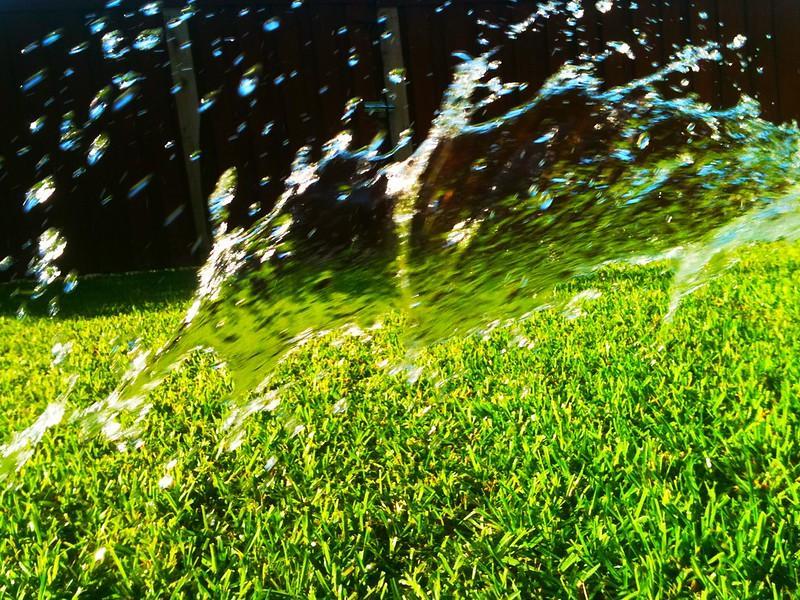
Proper watering and lawn maintenance are crucial to growing healthy grass.
Once the seeds or sod are in place, it is time to water the lawn.
You will need to regularly water your lawn in short bursts during the first few days to keep the seeds and new sod moist. However, as time passes, you must move towards deep and infrequent watering as it helps grass establish robust root systems.
Furthermore, you will need to fertilize your grass as it grows. And once the grass reaches mowing height, mow it at its highest recommended settings. All this will ensure that your grass stays healthy and can compete against pesky lawn weeds.
Final Thoughts
A lush green lawn is the envy of the entire neighborhood. However, maintaining a lush green lawn and keeping it free of weeds is no easy task. Sometimes, whole yards become overrun by weeds, becoming a nightmare for unfortunate homeowners.
You can fix a lawn full of weeds if you know what to do and have suitable materials. However, when in doubt, do not risk it. You might end up doing more harm than good. Instead, call professionals who will get the job completed for you.
Sources for Further Reading
Weeds and Other Lawn Problems – Lawn Talk- University of Illinois Extension. (2022). Retrieved 29 December 2022, from https://web.extension.illinois.edu/lawntalk/weeds/
Weed Management in Lawns Guidelines–UC IPM. (2022). Retrieved 29 December 2022, from https://ipm.ucanr.edu/PMG/PESTNOTES/pn74113.html
Common Home Lawn Weeds In Maryland | University of Maryland Extension. (2022). Retrieved 29 December 2022, from https://extension.umd.edu/resource/common-home-lawn-weeds-maryland
Editor’s Recommendations
Top 10 Weed Killers For Bermuda Grass | A Comprehensive Guide
Should You Spray Weeds Before Or After Rain? Best Time To Spray
Common Types of Sticker Weeds (and How To Get Rid Of The Sticker Weeds)







